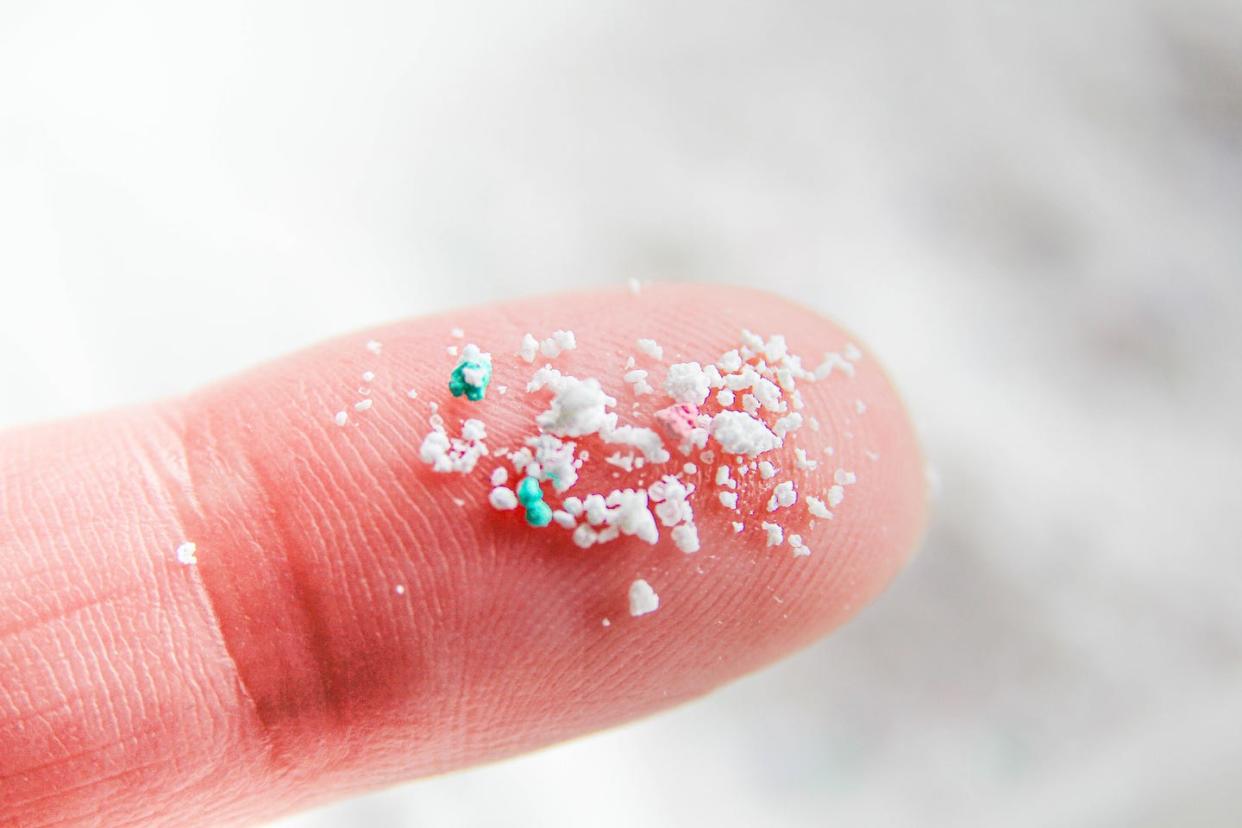There’s a ‘Pretty Alarming’ Amount of Microplastics in Our Brains

"Hearst Magazines and Yahoo may earn commission or revenue on some items through these links."
Microplastics, small bits of material five millimeters or less, have been found in almost every corner of the body, including the brain.
A new study analyzes how much of the brain is swimming in this plastic detritus and finds that it can contain up to 30 times more microplastics than the liver or kidney.
This could have serious consequences for human health as concentrations of microplastics arise, as evidence of increased microplastics in the brain appear to correlate with incidences of dementia.
Microplastics can be found everywhere—even in your body. Studies have found these plastics, usually 5 millimeters or much, much smaller, in human blood, gut microbiome, and placenta. That’s right, we’re even born with the stuff.
Now, a new study from scientists at the University of New Mexico (UNM) has found that the brain isn’t an exception to this clearly ubiquitous microplastics rule. Back in April 2024, this same team of scientists discovered how microplastics can migrate out of the gut and make their way to the liver, kidney, and yes, the brain. However, this new research shines a concerning light on that last organ as the scientists estimate, in a pre-peer reviewed paper shared by the National Institutes of Health (NIH), that the brain contains much more of these nefarious microplastics than previously imagined.
“Micro- and nanoplastics [MNP] concentrations in decedent brain samples ranged from 7-to-30 times the concentrations seen in livers or kidneys,” the paper read. “The parallels between the present data showing an increasing trend in MNP concentrations in the brain with exponentially rising environmental presence of microplastics and increasing global rates of age-corrected Alzheimer’s disease and related dementia…add urgency to understanding the impacts of MNP on human health.”
Anything made of plastic can become these troublesome microplastics with enough time. The National Oceanic and Atmospheric Administration—yes, there’s lots of microplastic in the ocean—says they can come from large sources that degrade over time, or microbeads that are often added as an exfoliant to health and beauty products or even toothpastes. In this study, the most common plastic present was polyethylene, an extremely common plastic that makes up stuff like plastic bags. According to the study’s researchers, the average person consumes about five grams of microplastics a week, which is roughly the weight of a credit card.
Because these plastics can be so small—even to high-powered microscopes—scientists also hunt for the chemical makeup of these plastics to discern concentrations in human tissue. After analyzing 51 samples of the liver, kidney, and brain from men and women, taken post-mortem during routine autopsies, the researchers found concentrations in the brain were sometimes 30 times higher than other organs. This could be explained by a variety of reasons. The brain, for example, has higher blood flow than other organs, doesn’t experience as much cellular regeneration relatively, and also isn’t as adept as flushing toxins as the liver and kidney. But an explanation doesn’t make it less worrisome.
“It’s pretty alarming,” UNM’s Matthew Campen, lead author of the study, told The New Lede. “There’s much more plastic in our brains than I ever would have imagined or been comfortable with…I don’t know how much more plastic our brain can stuff in without it causing some problems.”
This study also highlights that some of those problems are already impacting human health. Twelve of the 51 samples, for example, were from people who died with dementia—and those samples contained 10 times more plastic by weight than healthy samples. While correlation doesn’t necessarily mean causation, this trend is enough to have health officials concerned.
While microplastics are impossible to avoid, there are a few things you can do to limit your exposure, according to experts from UNM. Drinking tap water with a water filter, avoiding heating plastics (especially plastic food containers), using glass or stainless steel storage for food, eating whole foods, and also buying local (which often avoids the need for plastic wrap) can cut down your exposure.
Sadly, there’s no chance of returning to a world free of this plastic scourge, but you still have the power to limit your exposure with a few simple steps.
You Might Also Like
